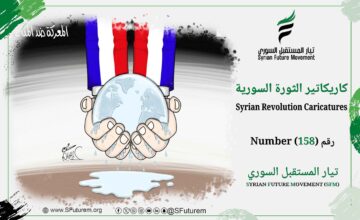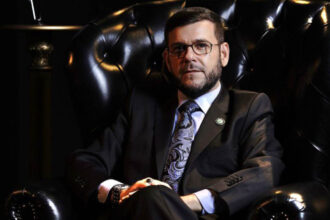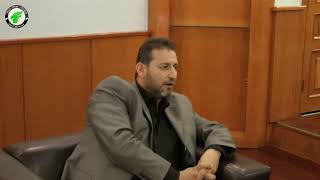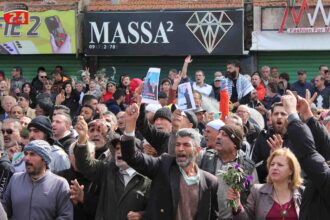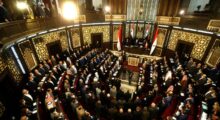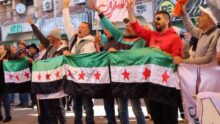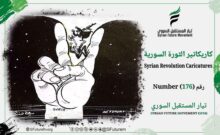Symbols and Figures of the State in Syria (13): Adeeb Shishakli
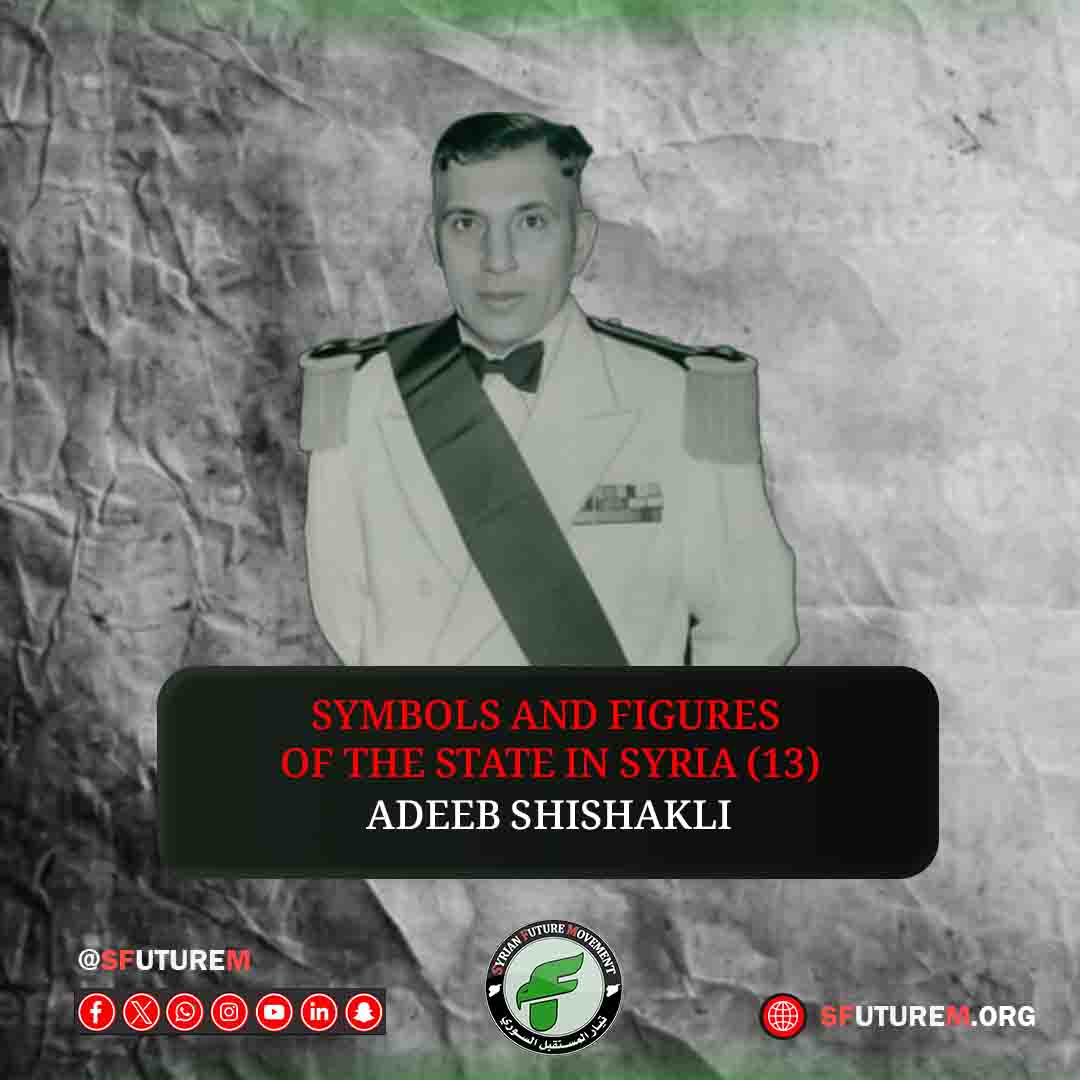
- He was born in 1909 in Hama, into a large and well-known family of Turkish origin.
- He graduated from the Agricultural School in Salamiyah, then from the Military School in Damascus.
- He volunteered in the French Levant Army, then transferred with other officers to the Syrian Army.
- He participated in the battle to liberate Syria from the French in 1945 and then led the Second Yarmouk Brigade in the Army of Salvation in Palestine in 1948.
- He joined Husni al-Zaim in the first coup on March 30, 1949, but they disagreed, and al-Zaim dismissed him from service.
- Shortly after, he returned as the commander of the First Brigade with the rank of colonel during Sami al-Hinnawi’s regime.
- He participated with al-Hinnawi in the second coup on May 14, 1949.
- He did not achieve his personal ambitions in either coup.
- He had a brother, Captain Salah al-Shishakli, who was a member of the Syrian Social Nationalist Party (SSNP), and during that time, he was influenced by the party’s ideas.
- As a result of this reality, he established close ties with Colonel Amin Abu Assaf and Captain Fadlallah Abu Mansour, who contributed to the arrest of Sami al-Hinnawi.
- He revolted against al-Hinnawi at the end of 1949, taking over power.
- He became the Chief of Staff in 1951.
- He conflicted with the head of state, Hashim al-Atassi, issuing a statement on the morning of December 19, 1949, affirming the dismissal of Sami al-Hinnawi and Asaad Talas from leadership for conspiring against the safety of the army, the integrity of the country, and its republican system.
- The third coup era became known as the era of dual rule (Adib al-Shishakli and Hashim al-Atassi).
- Al-Shishakli was a member of the Council of Colonels and dominated it, dissolving the council and forming a new one called the Supreme Military Council.
- During his time, the country witnessed the fourth coup. On the night of November 31, 1951, al-Shishakli made a decisive move towards power, arresting Prime Minister Maarouf al-Dawalibi, imprisoning him and most of his cabinet members, and arresting the Speaker of Parliament and some MPs.
- He pressured President Hashim al-Atassi to resign.
- Following this, Military Decree No. 1 was broadcast on December 2, 1951.
- Al-Shishakli focused on consolidating the roots of the fourth coup through direct military rule, fronted by Fawzi al-Silu as the head of state, with the true power being held by Colonel Adib al-Shishakli as the Chief of Staff.
- He issued a decree dissolving the parliament and another granting ministry secretaries general the powers of ministers until a new government could be formed.
- On January 15, 1952, he issued a decree dissolving most political parties in Syria (People’s Party, National Party, Muslim Brotherhood, Socialist Cooperative), keeping only the Ba’ath and Arab Socialist parties (all parties were eventually dissolved without exception on April 6), and another decree unifying newspapers to four, published in Damascus, Homs, Aleppo, and al-Jazira.
- Direct military rule led by Colonel Adib al-Shishakli lasted six months. During this period, he sought to counter Arab campaigns and opposition parties by implementing political, economic, and social reforms in the country.
- He issued 257 decrees, regulating the country’s internal affairs, beginning with a law abolishing political parties, a law unifying newspapers, and a law prohibiting students, teachers, employees, and workers from joining political parties or engaging in politics. A financial regulation law was passed, based on the principle of progressive taxation and minimizing indirect taxes on low-income earners. Foreign exchange controls were lifted, allowing for its importation while prohibiting the outflow of local currency.
- He issued a land reform law to regulate relations between landowners and tenants and another for agricultural reform that distributed state lands to landless farmers. The state began distributing 5 million hectares to 50,000 farming families, aiming to settle a quarter of a million people.
- During his era, the state initiated major irrigation projects, most notably the Ghab drainage project and the Yarmouk project. Negotiations began with the International Bank for Reconstruction and Development, controlled by the United States, to fund the state’s plan to irrigate 120,000 dunams and resettle 25,000 families. The state made progress in implementing the Latakia port project, designed to handle 800,000 tons of goods annually, and a five-year plan was put in place to complete it, along with electricity and rural lighting projects.
- The state, under his leadership, paid special attention to increasing the military’s capabilities and equipping it with modern weapons. Three French warships were purchased, a deal was signed to buy British fighter jets, and contacts were made with the United States to acquire tanks and artillery. Media outlets were encouraged to promote the enlistment of women in the armed forces.
- In terms of security, the country witnessed calm and stability. Crime rates and incidents of theft and robbery decreased, and the state’s ministries functioned well under the supervision of their secretaries general.
- Al-Shishakli informed Arab and foreign representatives that his coup did not require new recognition, relying on existing recognition.
- He issued a decree forming a ministry on June 6, 1952, and after its formation, announced that the military would support the government’s projects without interfering in its affairs. He confirmed that this government was temporary, tasked with leading the country to parliamentary elections within the framework of a new electoral law that would allow for genuine popular representation.
- He relied on his supporters from the Syrian Social Nationalist Party (SSNP) and called for the establishment of a new party named the “Arab Liberation Movement” to become the sole party in the country in preparation for elections. After the announcement of its founding, he turned his attention to organizing the apparatus of repression, launching a campaign of arrests and torture against anyone who opposed him.
- When Shishakli felt that the field was clear for him and his party, he called for parliamentary elections on July 10, 1953, in which the Arab Liberation Movement won 83 seats.
- He was known for policies similar to those of President Gamal Abdel Nasser, with whom he had strong ties. He monopolized political activity through a central political body (the Arab Liberation Movement), focused on agrarian reform, expanded taxes on the bourgeoisie, recruited women into the military, and adopted ideas not far from those of the SSNP.
- He arrested many of his opponents from various parties, imprisoning them. He used planes to bomb targets in the Sweida area, resulting in numerous civilian casualties.
- He sent the army to the mountain to brutalize its people, justifying this by claiming to have discovered large quantities of weapons overseen by Nuri al-Said and British intelligence in the area, in preparation for the British-American pact known as the Baghdad Pact.
- His violence became evident in his suppression of the Jabal Rebellion (1954). The bloody measures Shishakli took against the opposition, especially the rebels, led to a broad coalition against him. He chose to resign rather than continue the confrontation.
- He is known for his famous saying: “My enemies are like a snake, its head is in the mountain, its belly in Homs, and it stretches to Aleppo.”
- On September 5, 1950, a new constitution was published, applied until Shishakli’s second coup on December 29, 1951. However, it was reinstated on February 25, 1954, until the establishment of the United Arab Republic on February 22, 1958.
- This constitution reinforced the Arab identity of the state, stating that “the people are part of the Arab nation in their history, present, and future” and that “the religion of the president is Islam.”
- Due to an internal political crisis, the head of state, al-Atassi, resigned on December 2, 1951.
- The next day, Shishakli installed Fawzi Selo as president, who remained a figurehead until Shishakli appointed himself president on August 10, 1953, through a “referendum” and issued a new constitution.
- A popular opposition front formed, confronting Shishakli’s policies through student, labor, and peasant demonstrations. The opposition began in Damascus with bombings, and rebellion was declared in Jabal al-Druze. Shishakli responded with tanks and planes, further increasing public anger against the regime.
- Politicians convened a conference in Homs at the home of Hashim al-Atassi to draft a “National Pact” among them, which called for democracy, public freedoms, and the denunciation of dictatorship and police rule. They issued an ultimatum to Shishakli to restore constitutional order, release political detainees, and end the civil war in Jabal al-Arab.
- Shishakli responded by arresting all who signed the ultimatum and detaining senior Syrian politicians on January 24, 1953. Those arrested included Rashid al-Kikhia, Sabri al-Asali, Faiq al-Atassi, Adnan al-Atassi, Hassan al-Atrash, Mansur al-Atrash, Ali Bouzo, Abdul Wahhab Humeid, Munir al-Ajlani, Akram al-Hawrani, Michel Aflaq, Salah al-Bitar, Shakir al-As, and Rizkallah al-Antaki.
- The country experienced unrest and student demonstrations, which security forces violently suppressed with tear gas. Schools were closed, and demonstrations spread across Syrian cities, calling for the fall of the dictatorship, the dissolution of parliament, and the restoration of constitutional life, laying the popular groundwork for Shishakli’s downfall.
- General Faisal al-Atassi and military units in Aleppo arrested General Muhammad Tamer Khan, the military commander of the northern region, and the army also seized important buildings like the telecommunications building, the municipal hall, and Radio Aleppo, from which a broadcast was made in the name of “Free Syria Radio,” calling on all military units to “join the revolution.”
- By noon, military units in Latakia, Deir ez-Zor, Homs, and Daraa had joined the coup, leaving Shishakli with control only over military units in Damascus and its countryside.
- Following intense consultations, despite the possibility of holding out and defending the capital, Shishakli announced his resignation on the evening of February 26, 1954, citing the need to preserve “Syrian blood, the unity of the Syrian army, and to prevent the country from descending into civil war.”
- He left Damascus by road to Beirut under the protection of the coup leaders and later went into exile, first in Riyadh and then in Brazil.
- He was assassinated in Brazil in 1964 by a young Druze named Nawaf Ghazaleh, who ambushed him on a street in the town of Ceres, Brazil, and shot him to death in retaliation for Shishakli’s military actions against the Druze in the Jabal al-Arab region.
We, in the Syrian Future Movement (SFM), as we recall the legacy of the founding statesmen of Syria, evoke the memory of one of Syria’s influential figures and a symbol of the leaders of the first Syrian state who contributed to shaping its structure: Colonel Adib al-Shishakli. This is part of a series we present to you, highlighting the symbols and leaders of the Syrian state, driven by our desire to connect our contemporary revolutionary present with a solid past and key historical milestones. We aim to revive within our people the need to build and cultivate distinguished statesmen, learning from their experiences, overcoming their shortcomings, and building upon their history. In doing so, we preserve the nation, safeguard its achievements, and restore the honor and glory of the Syrian state after years of injustice, oppression, and corruption.
